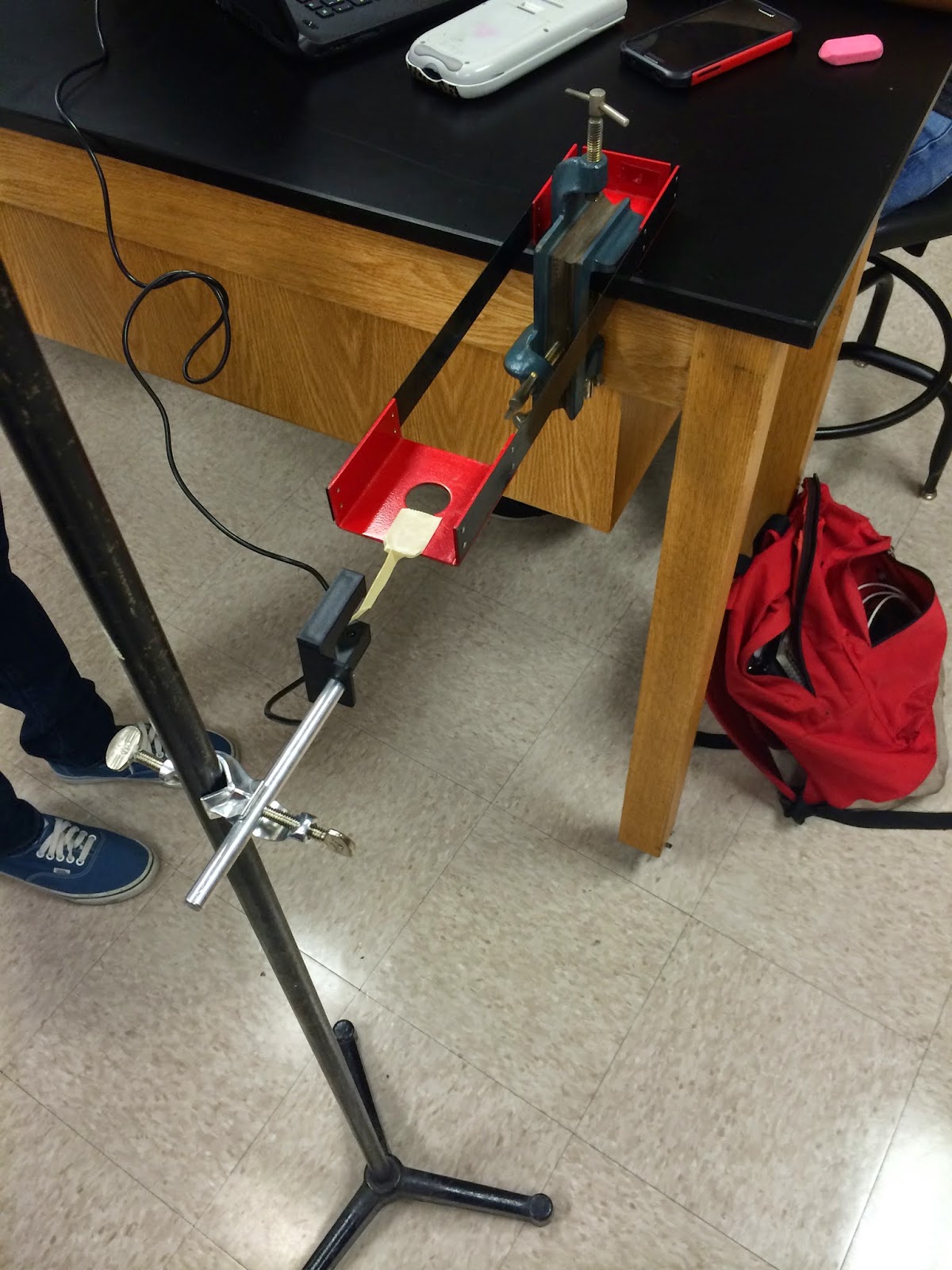Inertial Balance and Photogate
Explanation of the lab: We were instructed to uses the photogate to find the period of oscillation of multiple objects. We measured the oscillation of 9 objects starting with no mass at all and added 100g each time until we arrived to 800g. We were also asked to find the oscillation of two unknown items. We used a block of wood and a wallet We were then asked to input our data into a blank Lagger Pro document. We inserted our data in to columns by using the calculated columns options.(Photo #2) The first titled mass (in kg) and the second column titled Period (in sec.) We then had to input out guess to how much our try would weigh under the User Parameters section of the menu tab.(PHOTO #3) We then created two more columns using the same Calculated Columns options this time naming them ln(m+mtray) and ln(period). We then plotted out data using a ln(t) vs. ln(m+mtray). We used Liner Fit to connect our plotted data.(PHOTO #1) We adjusted our parameters of the mtray (mass of tray) until we came up with a line with the coefficient as close to 1 as possible. We used 300g for the wight of the tray to get us as close to 1 as possible.
PHOTO #1
PHOTO #2
PHOTO#3
What we did with this data: We used the formula T=A(m+mtray)^n in which we manipulated by taking the natural log of both sides to come up with lnT=n ln(m+mtray)+ lnA. This formula provides you with a fundamental mathematica formula that looks similar to y=mx+b. This allowed us to use the information provided by Photo #1 which gives us the slope (n) and our y intercept (lnA). The Photo below is a photo of what we used to determine the value of our unknown objects.
Mass of our unknowns: The oscillation/period (T) of the block of wood was .3553. Using this formulas we determined that the weight of the block of wood would be .1103 kg or 100 g. The actual weight was .099kg or 99g.The oscillation/period (T) of the wallet was .3962. Using this formulas we determined that the weight of the wallet would be .125 kg or 125 g. The actual weight was .124kg or 124g.
Mission Complete: Our lab allowed us to come within 1g of the actual weight by coming up with a formula to find the relationship between mass and period of oscillation.




